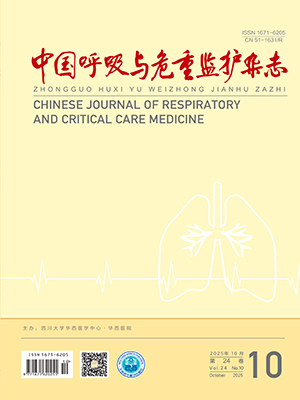| 1. |
Howell JE, McAnulty RJ. TGF-beta: its role in asthma and therapeutic potential. Curr Drug Targets, 2006, 7(5): 547-565.
|
| 2. |
Li M O, Wan YY, Sanjabi S, et al. Transforming growth factor-beta regulation of immune responses. Annu Rev Immunol, 2006, 24: 99-146.
|
| 3. |
Bettelli E, Carrier Y, Gao W, et al. Reciprocal developmental pathways for the generation of pathogenic effector TH17 and regulatory T cells. Nature, 2006, 441(7090): 235-238.
|
| 4. |
Yang YC, Zhang N, Van Crombruggen K, et al. Transforming growth factor-beta1 in inflammatory airway disease: a key for understanding inflammation and remodeling. Allergy, 2012, 67(10): 1193-1202.
|
| 5. |
Abdulamir AS, Hafidh RR, Abubakar F. Different inflammatory mechanisms in lungs of severe and mild asthma: crosstalk of NF-kappa-B, TGFbeta1, Bax, Bcl-2, IL-4 and IgE. Scand J Clin Lab Invest, 2009, 69(4): 487-495.
|
| 6. |
Gagliardo R, Chanez P, Gjomarkaj M, et al. The role of transforming growth factor-beta1 in airway inflammation of childhood asthma. Int J Immunopathol Pharmacol, 2013, 26(3): 725-738.
|
| 7. |
Shi Y, Dong Y, Duan Y, et al. Substrate stiffness influences TGF-beta1-induced differentiation of bronchial fibroblasts into myofibroblasts in airway remodeling. Mol Med Report, 2013, 7(2): 419-424.
|
| 8. |
Bourdin A, Neveu D, Vachier I, et al. Specificity of basement membrane thickening in severe asthma. J Allergy Clin Immunol, 2007, 119(6): 1367-1374.
|
| 9. |
Nakashima T, Hayashi T, Mizuno T. Regulation of the development of asthmatic inflammation by in situ CD4(+)Foxp3 (+) T cells in a mouse model of late allergic asthma. Inflammation, 2014, 37(5): 1642-1653.
|
| 10. |
Palomares O, Yaman G, Azkur A K, et al. Role of Treg in immune regulation of allergic diseases. Eur J Immunol, 2010, 40(5): 1232-1240.
|
| 11. |
Palomares O, Martín-Fontecha M, Lauener R, et al. Regulatory T cells and immune regulation of allergic diseases: roles of IL-10 and TGF-β. Genes Immun, 2014, 15: 511-520.
|
| 12. |
Provoost S, Maes T, van Durme Y M, et al. Decreased FOXP3 protein expression in patients with asthma. Allergy, 2009, 64(10): 1539-1546.
|
| 13. |
Roychoudhuri R, Hirahara K, Mousavi K, et al. BACH2 represses effector programs to stabilize T(reg)-mediated immune homeostasis. Nature, 2013, 498(7455): 506-510.
|
| 14. |
Presser K, Schwinge D, Wegmann M, et al. Coexpression of TGF-beta1 and IL-10 enables regulatory T cells to completely suppress airway hyperreactivity. J Immunol, 2008, 181(11): 7751-7758.
|
| 15. |
Huang MT, Dai YS, Chou YB, et al. Regulatory T cells negatively regulate neovasculature of airway remodeling via DLL4-Notch signaling. J Immunol, 2009, 183(7): 4745-4754.
|
| 16. |
Zhao J, Lloyd C M, Noble A. Th17 responses in chronic allergic airway inflammation abrogate regulatory T-cell-mediated tolerance and contribute to airway remodeling. Mucosal immunology, 2013, 6(2): 335-346.
|
| 17. |
Jin H, Luo Q, Zheng Y, et al. CD4+CD25+Foxp3+ T cells contribute to the antiasthmatic effects of Astragalus membranaceus extract in a rat model of asthma. Int immunopharmacol, 2013, 15(1): 42-49.
|
| 18. |
Xu W, Lan Q, Chen M, et al. Adoptive transfer of induced-Treg cells effectively attenuates murine airway allergic inflammation. PloS one, 2012, 7(7): e40314.
|
| 19. |
Wan G, Wei B. Erythropoietin regulates Treg cells in asthma through TGFbeta receptor signaling. Am J Transl Res, 2015, 7(11): 2305-2315.
|
| 20. |
Wei Y, Liu B, Sun J, et al. Regulation of Th17/Treg function contributes to the attenuation of chronic airway inflammation by icariin in ovalbumin-induced murine asthma model. Immunobiology, 2015, 220(6): 789-797.
|




